Welcome to the seventh most visited country in the world!
Here is some information about the destination.
Let us start with the pleasures! Germany offers multiple diverse possibilities for enjoyment. You will find a wide range of cultural attractions and nature experiences – literature & philosophy, art, architecture, music, cinema, cuisine, media, sports, fashion and design.
The country has 16 national parks, 15 biosphere reserves, 98 nature parks and more than 400 zoos and animal parks.
Here are some suggestions which first come to my mind:
Where is popular?
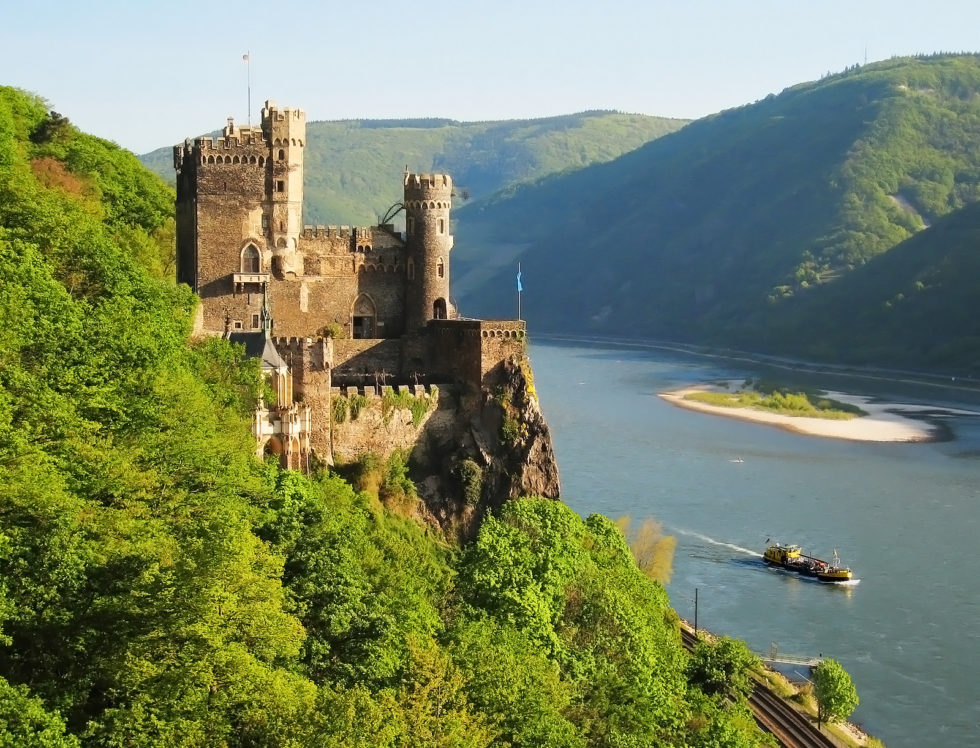
Very popular – go for a trip on one of the historic tourist routes; ‘Romantic Road’, ‘Wine Route’, ‘Castle Road’, ‘Avenue Road’ or ‘German Timber-Frame Road’. Germany is well known for all of these and if you go for the ‘Wine Route’, book for a time between March and October – there are numerous open-air wine festivals!
Do part of your trip on a boat on the River Rhine or River Moselle. It is most romantic to see the vineyards rising up the hillsides to left and right and occasionally a castle appears on the scene.
Fancy a city trip? Berlin, Hamburg, Munich, Cologne, Frankfurt, Stuttgart, Düsseldorf, Dortmund, Essen and Leipzig are the largest cities in Germany. I grew up in Hamburg and also lived in Berlin.
Hamburg
Hamburg is a very green place with numerous parks. There is the River Alster which looks like a lake in the city centre and is covered by sailing boats in the summer.
Hamburg has the third-busiest port in Europe. It lies on the River Elbe whose mouth into the North Sea is 110 kilometres far away.
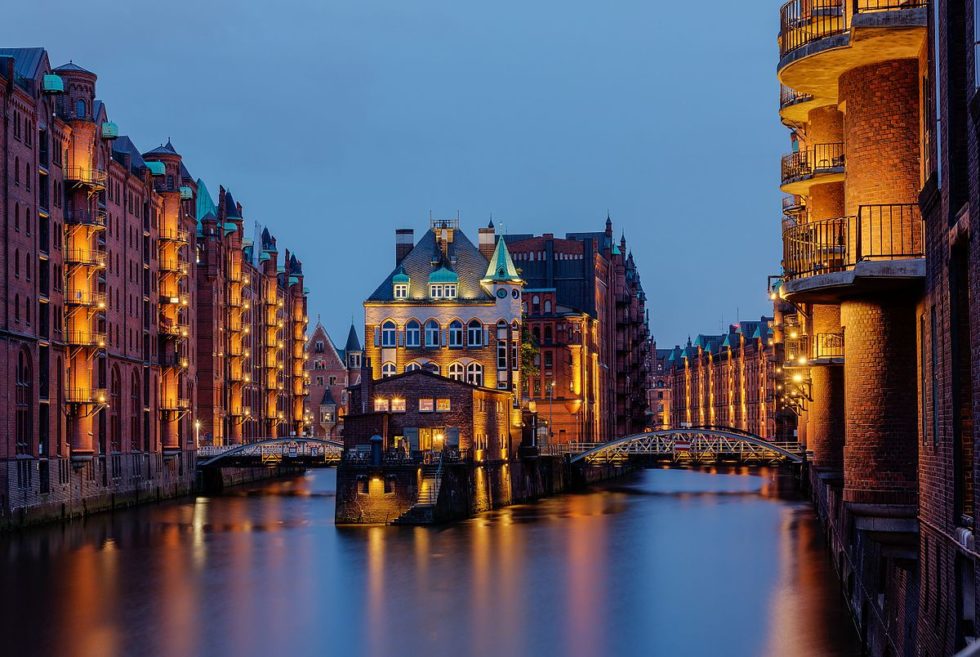
A special attraction is the UNESCO World Heritage Site, the ‘Speicherstadt’ (warehouse district) which is also located in the port area. It is the largest warehouse district in the world, built in 1883 – 1927. The buildings were built on oak log foundations. The Speicherstadt was a duty free zone in order to move goods in and out without paying customs. It was abolished on the 1st January 2013 after nearly 125 years.
A stroll in the evening is most impressive when the buildings of the Speicherstadt are artificially illuminated.
The Speicherstadt is now part of the HafenCity, officially established in 2008, a project of urban regeneration. The HafenCity is the largest urban redevelopment project in Europe by area (2.2 square kilometres).
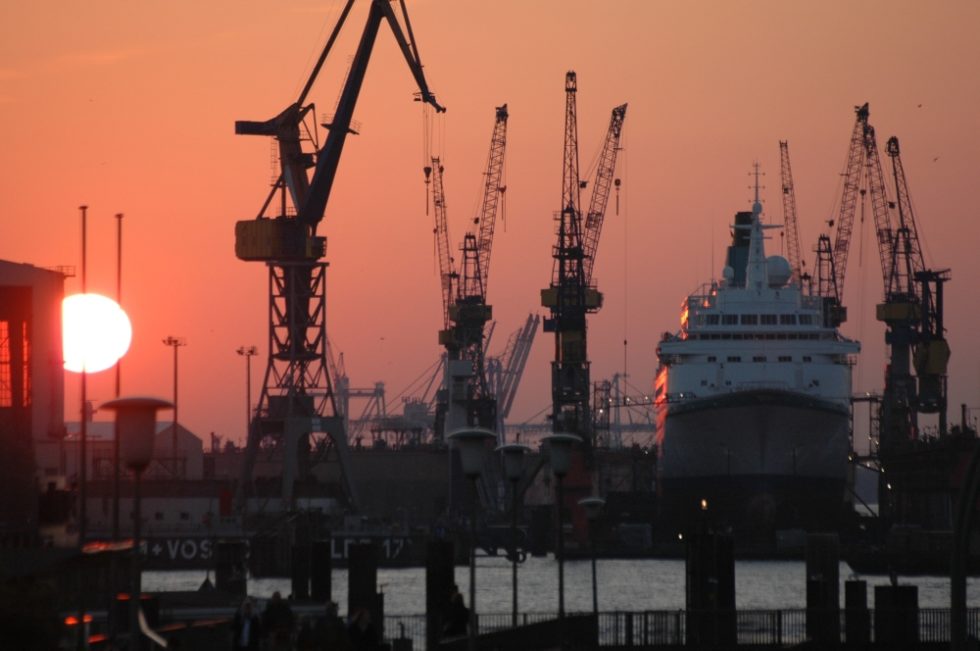
When I was a student, I enjoyed hanging out on the sandy beach at the ‘Strandperle’ bar in the Oevelgönne district. This is a great place to relax with a drink surrounded by the industrial scenery of the port’s big cranes on the other side of the river. Occasionally a large container ship passes to enter the port.
By the way – the Elbe is tidal and there are periods during the year when flood warnings are broadcast on the radio. Once, a friend from uni who originally came from Frankfurt, called me hysterically. She had heard the flood warnings and asked me if she needed to get a rubber dinghy. Well, she lived in about the highest area of Hamburg in an apartment on the fifth floor!!! Off course, the flood warnings aren’t meant as a dramatic end-of-the-world message but are primarily for people who have parked their car near the river.
Another curiosity: Hamburg is thought to be the city with the most bridges in the world (2,300)!
Hamburg to Berlin is a distance of 288.4 kilometres, 3 hours and 9 minutes by car, says Google Maps! This doesn’t seem very much and you could think that these two cities might be somehow similar. Wrong!!! Hamburg is a well established wealthy trade and publisher city with a big port. Its inhabitants tend to be introverted and polite. If you want to make friendships in Hamburg you have to take the first step and approach people. You are only a real Hamburger if you are at least the third generation to be born there! Well, a bit heavy going, but when you live there, fortunately you don’t necessarily feel this.
Berlin
Berlin was first mentioned in 1244 but from 1640 a political period of immigration and religious tolerance began. 50 jewish families from Austria were given a home in Berlin in 1671. In 1685, 15,000 French Huguenots were invited to live in Brandenburg (the region surrounding Berlin) of which 6,000 settled in Berlin itself. There was indeed a substantial french influence on the city and in 1700, 20% of the population was French. Many other immigrants came from Poland, Bohemia and Salzburg.
Today, Berlin seems to be even more a multicultural place. People from 190 different countries live there and it is known for being open-minded and tolerant. The inhabitants tend to behave brusquely but are well meaning – Berliners are somehow proud of their ‘freche Schnauze’ (naughty snout) and you have only properly settled in Berlin when you have yelled at a policeman at least once!
My parents, on one of their visits to us in Berlin from Hamburg, walked from the central train station to our apartment. They were equipped with a city map and while waiting at a red traffic light, they were approached by a Berliner who asked if they needed any help! My father very politely said that they were fine. But the Berliner didn’t let go and insisted, saying: ‘Ask if you need help. You are after all in Berlin!’
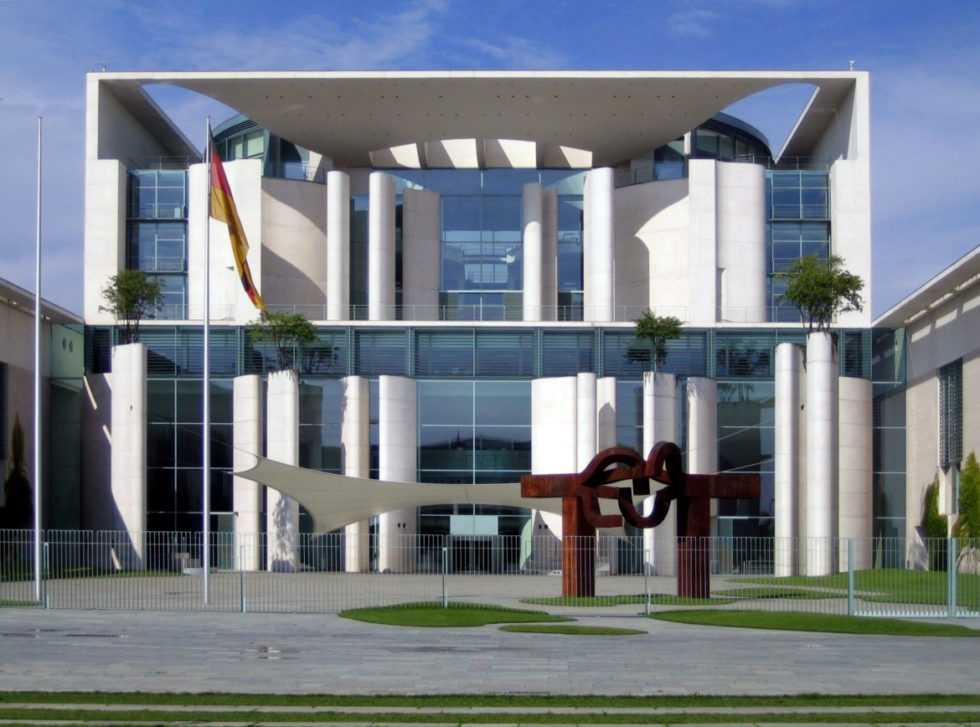
Berlin is the capital, the seat of government and largest city in Germany. This place never sleeps – 24 hours of thriving life! You will find history at every corner, numerous art galleries, music events, theatre, international cuisine, important museums, historic and contemporary architecture, film and fashion, festivals and nightlife, sport events, and so on….. The place is hugely creative and innovative. It is the hub for business start-ups. If you look for an energetic location or you are full of energy yourself, then Berlin is the place to be!
It is said that out of 1000 inhabitants, 710 have a bicycle in Berlin. In fact, the city is well equiped with bicycle routes. People use their bike primarily as a means of transport instead of a car or public transport. Cyclists in Berlin are very impatient with tourists who often aren’t aware they are walking on the cycle path and get yelled at by the cyclists. Well, we have already said that Berliners have a ‘freche Schnauze’, so if it happens to you get out of the way and carry on without being offended!
In summer, life happens outside. Endless bars, cafes and restaurants with tables and chairs outside offer a huge variety of international cuisine. Along the River Spree, which flows through the city, there are plenty of green areas where people sit and have a picknic or barbeque.
Last but not least, the Berlin zoo, which opened in 1844, is the oldest in Germany with the most comprehensive collection of species in the world!
Food and Drink
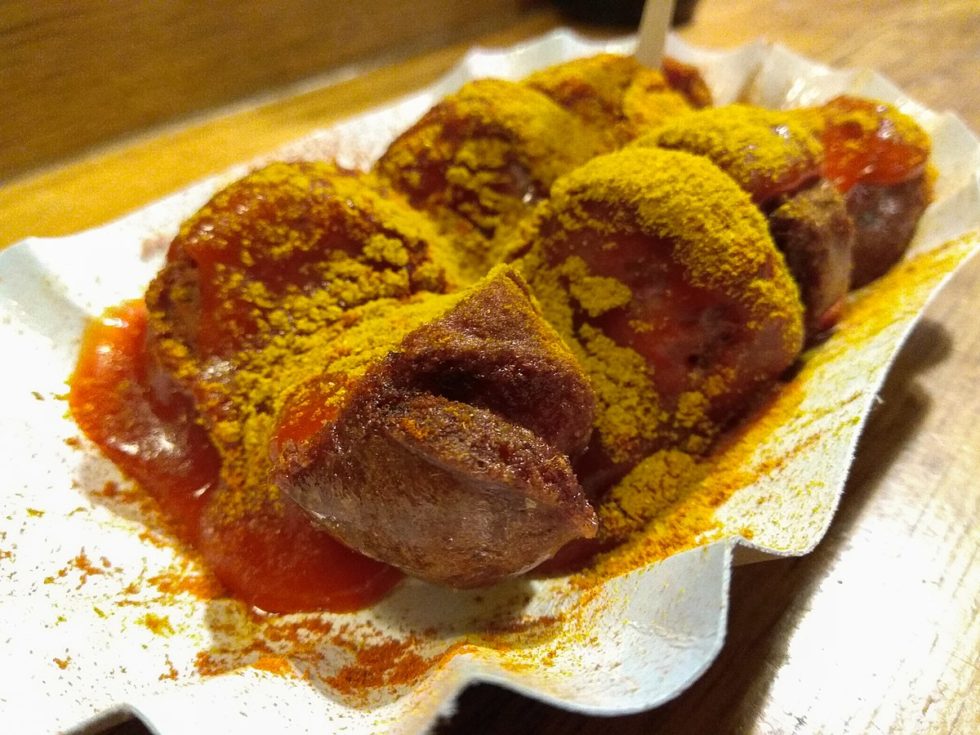
Time to change the subject. How do we please our taste buds on our trip!?
All over the country you will find fried sausages sold as street food from vans or huts – we call them Imbissbuden. The smell is irresistable! These sausages are called Krakauer, Tueringer or simply Bratwurst (braten – to fry; Wurst – sausage). But the king of fried sausages is the ‘Currywurst’ which apparently was invented during or shortly after WWII in Berlin. The Currywurst is a Bratwurst with ketchup and curry + chilli powder.
If you would like to try one before heading off to Germany, here are instructions:
1. Buy a six pack of Bratwürste (Würste – plural for Wurst). These are short, white-ish and chunky pork sausages. You will easily find them in one of the two well-known German supermarket chains, the ones where they rush you through the till.
2. Fry your sausage(s) on both sides with a little oil in a frying pan – you can’t roll them because they tend to be bent like a banana. Place your Bratwurst on a plate and cover the sausage entirely with tomato ketchup – don’t be timid, it isn’t the moment for being moderate, your sausage needs to be hidden under the ketchup!!! Now put some currypowder on top and if you like it spiced hot, some chilli powder too. That’s it!
3. In the Imbissbude you can accompany them with a bread roll or some chips. But don’t be tempted to put some ridiculous healthy salad leaves around it. Currywurst doesn’t pretend to be a healthy meal! After you had one, you might want a second one – it is soooo more-ish. Yummy!
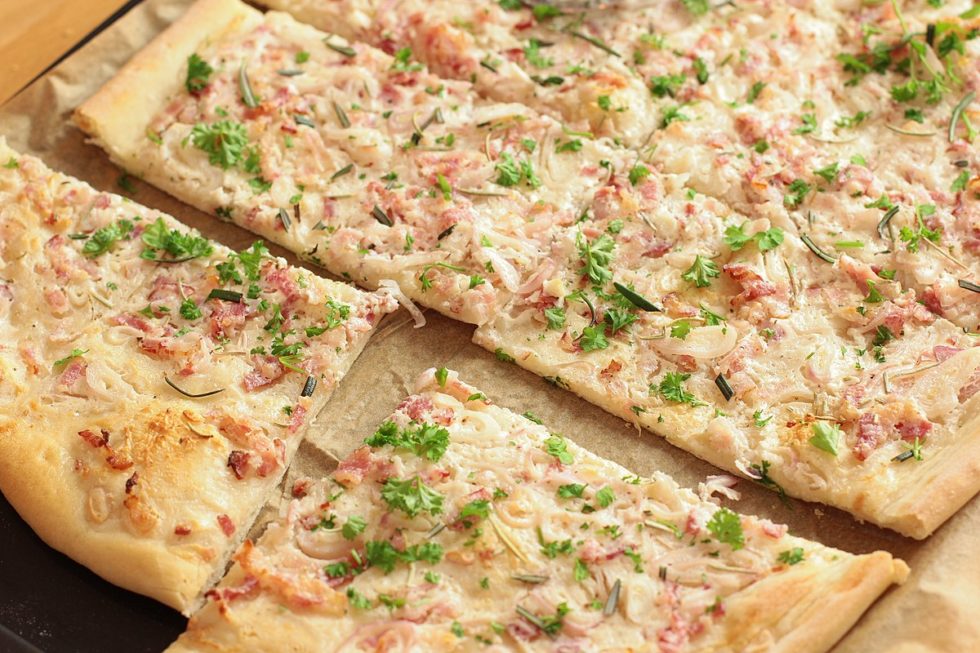
Do you still feel hungry? Perfect, here are some more suggestions:
In Bavaria you can eat excellent pork roast with a thick crunchy crust and dumplings.
One of my favourites from the Alsace region is Flammkuchen. This looks a bit like a pizza because it has a thin crusty oven baked dough base but is topped with onions, bacon pieces and sour cream. Accompany it with a glass of white wine from the Alsace region – this works perfectly!
Maultaschen, which come from the Schwaben region, is another wonderful food. These are big square ravioli type pockets filled with minced meat, onions, herbs and bread. I like them best cooked in water and served with onions fried in butter on top.
For your sweet tooth in the afternoon, I would suggest that you find your way into a Konditorei. There you will find a variety of cream cakes. They exist with fresh strawberries, chocolate, mandarines, etc. The most famous German cream cake is the Schwarzwälderkirschtorte (Black Forest Cake).
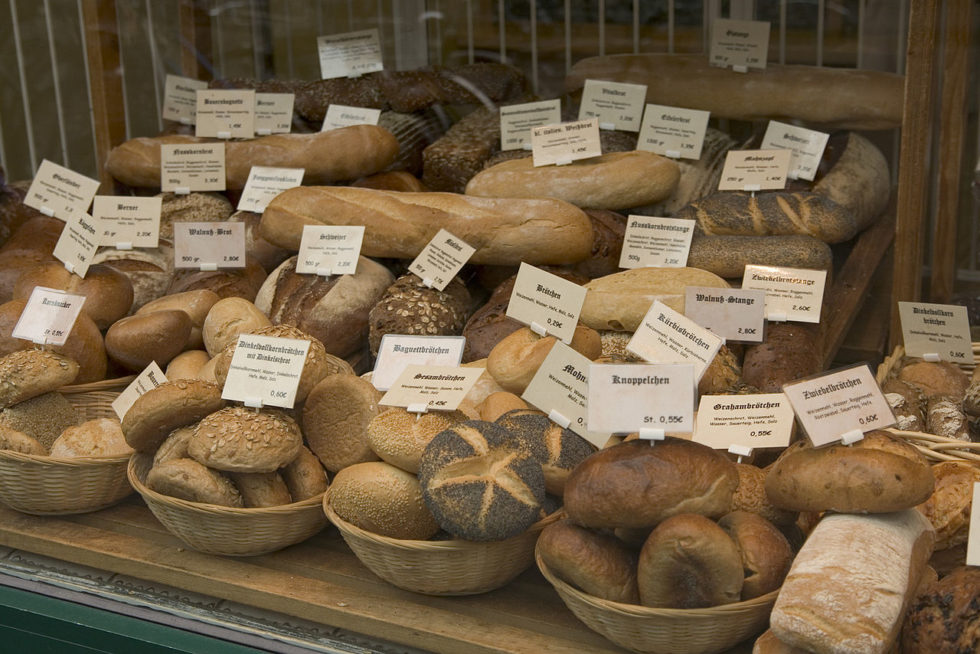
Do you know that Germany prides itself in having the largest variety of breads in the world? Whether true or not, there are more than 3000 different kinds of breads listed in the German Bread Registry and Germans eat bread as a proper meal. Traditionally, they would have supper called ‘Abendbrot’ (evening bred) between 6 and 7 pm and eat sliced whole flour bread with butter or margerine, topped with cold sliced meat or cheese. I enjoy most a rye/wheat mixed sourdough bred – but it must be really sour!
You must be thirsty by now! Not my favourite, but do you like beer? Brilliant – Germans are massive beer drinkers and Germany offers an excellent choice of quality beers. Beer is brewed after the ‘German Reinheitsgebot’ (German Beer Purity Law). This means only certain ingredients can be used for the production of beer: water, barley, hops and yeast while sugar is only allowed for top fermenting beers.
General Information
If you can still bear with me, here are some general facts from the encyclopedia!

Germany is located in central and western Europe; in the north between the Baltic and the North Sea and in the south between the Alps, Lake Constance and the High Rhine. It shares borders with Denmark (north), Poland and Czech Republic (east), Austria and Switzerland (south), France (southwest) and Luxembourg, Belgium and Netherlands (west).
Officially named ‘The Federal Republic of Germany’, the country has 16 constituent states. The states have their own constitutions and are mainly autonomous regarding their internal organisation. In fact, Germany is decentralised. The capital and largest metropolis is Berlin, the financial capital with the busiest airport is Frankfurt and the largest urban area is the Ruhr, with its main centres Dortmund and Esssen.
83 million people live in Germany in an area of 357,386 square kilometres. It is the second most populated country in Europe.
The official spoken language is German. Native minority languages are Danish, Low German, Saterland Frisian, North Frisian, Low Rhenish, Romany and Sorbian. Other countries where German is spoken are Austria, Switzerland, Belgium, Luxembourg and Liechtenstein. In Denmark, Hungary, Italy and Poland, a national minority speaks German.
Germany has a strong social market economy. The country is very innovative and the corruption level is very low. You seem to be also reasonably safe there: in 2014, Germany had a very low murder rate with 0.9 per 100,000. It has the largest national economy in Europe; the world’s fourth largest economy by nominal GDP. The industrial and technological sectors are global leaders. Germany is a big exporter of goods, the third worldwide.
Germany is a federal parliamentary representative democratic republic. The country has a written constitution (Grundgesetz) which guarantees human dignity, the separation of powers, the federal structure and the rule of law. The Grundgesetz sets the basis for the work of the political system. It needs a two-thirds majority of the Bundestag and Bundesrat to amend the Grundgesetz.
In 1957, the country was one of the founders of the European Economic Community and also the European Union in 1993. Germany is part of the Schengen Area and co-founder of the Eurozone (1999). Other institutional memberships are: United Nations, NATO, G8, G20, OECD, World Bank and IMF.
The overall standard of life is very high. Germany has social security, a universal health care system and universities with free tuition. In 2015, the country had its lowest rate of unemployment and youth unemployment was the lowest in the EU.
I hope that you found my first blog article interesting. Thank you for reading and for your patience!
Susanne
Photos and images: Wikimedia Commons/Creative-Commons-Licence CC-BY-SA
Factual information: Wikipedia.org

